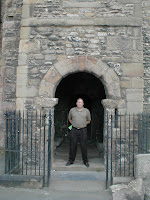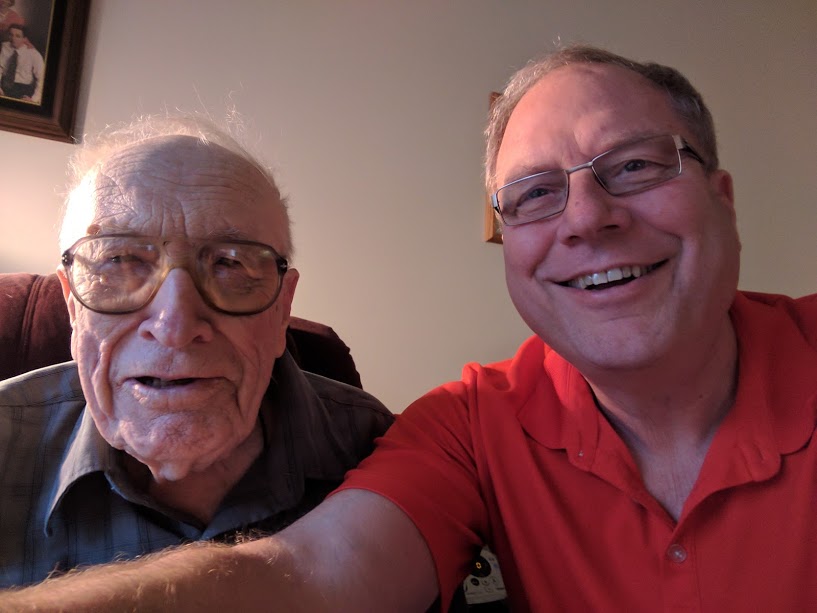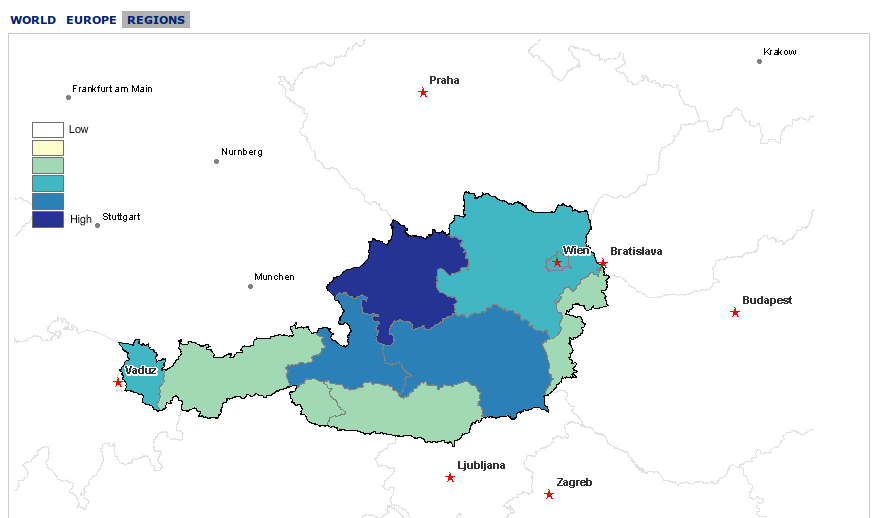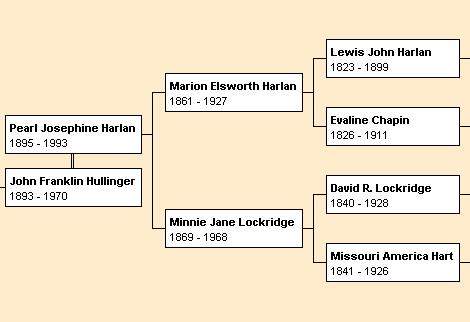This blog is about the family of John and Pearl Harlan Hullinger who settled in Vivian, South Dakota. Family names include Hullinger, Hollinger, Holiger, Harlan, Hart, Lockridge, Poe, Siddens, Kirk, Jennings, Chapin, Ford, Cornwall.
12/16/16
9/3/16
Our Great Great Great Grandfather Moses Harlan 1782 - 1842
1786-1842
Moses Harlan served with Abraham Lincoln in the Illinois Legislature in 1838-40 representing Peoria County, Illinois. Lincoln and Harlan were members of the Whig Party and often but not always voted together.
The Harlan family in America was founded by George and Michael Harlan, Quakers who came to Pennsylvania in 1687 from England. The family history was compiled in the "History and Genealogy of the Harlan Family," by Alpheus H. Harlan in 1914. On page 224, it states that:
“Moses Harlan (#676), son of George (#180), farmer (Friend or Quaker), born in Fayette County, Pennsylvania, in 1786; died in Peoria, Ill., 1842, and is buried there in the cemetery at Radnor Township, Peoria County, Ill. He was married near Ridgeville, Warren County, Ohio, in 1813 to Ann Jennings, daughter of John and Sarah (Hopkins) Jennings, who was born in 1791 and died in 1824. She is buried in Friends burying ground, Miami Meeting House.
Moses was descended from George Harlan #3; Aaron Harlan #8; George Harlan # 37; George Harlan #180; Moses Harlan #676;
There are several books in the Peoria and Dunlap, Illinois libraries that describe the early settlement of Peoria County. Napoleon Dunlap in the Historical Encyclopedia of Illinois and History of Peoria County Volume II tells us that many of the early settlers of Radnor came mostly from New York, Massachusetts, Ohio, and other Eastern States. Many of them came overland by emigrant wagons, consuming weeks in making the journey. He states that “Moses Harlan was County Commissioner in 1838, and two years in the Legislature,1838-40. His son, George B. Harlan, settled on Section 2 of Radnor Township in 1836. He was a Justice of the Peace for some years and a member of the Board of Supervisors for one or two years, besides holding other local offices.”
Dunlap also states that Moses’s sons Lewis Harlan was elected Assessor and George B. Harlan elected Justice of the Peace. He further states that:
“Moses Harlan came to Radnor Township in 1833 and purchased land from the Government on Section 22, the title deeds of his land having been signed by President John Tyler. Moses Harlan was an old line Whig, and served as a member of the Legislature and a County Commissioner.”
“Moses Harlan came to Radnor Township in 1833 and purchased land from the Government on Section 22, the title deeds of his land having been signed by President John Tyler. Moses Harlan was an old line Whig, and served as a member of the Legislature and a County Commissioner.”
Mr. William Logan Miller In the Old Settler's Book in the Dunlap Library states that “In the fall of '36 Moses Harlan moved in from Indiana with a large family. Then they had to build. They took up land south of father. There were three families: Aaron Wilkinson was a son-in-law of Moses Harlan, George Harlan was a Justice of the Peace. John Harlan was a young man; and there were also Lewis and Thomas. There was one young lady Rice McMillen married; her name was Phoebe Harlan.
The first inkling I had that my Great Great Great Grandfather had served with Lincoln in the Illinois Legislature was when I read the history of Dunlap Township. It is surprising that his descendants did not pass along this interesting item. But Moses died very young and this memory died with him, at least for our branch of his desdendants. I did visit the Lincoln Library in Springfield and read the records of the two years that Moses served with Lincoln. Moses often but now always voted with Lincoln, who was the leader of the Whig Party to which they both belonged.
Despite the Quaker heritage of the Harlan family, a number of Moses’ sons and grandsons served in the Civil War. His sons John and Lewis Harlan and his grandsons Harrison and Perry Harlan served in the war.
Moses son Lewis Harlan was my Great Great Grandfather. http://lewisharlan.blogspot.com/ His biography in the Harlan family history shows that Moses also lived in Pikes County, Indiana from 1828 to 1836. So Moses like many Harlans moved west as the frontier advanced west, starting in Pennsylvania, then Ohio, Indiana and finally Illinois.
More about Moses Harlan at mosesharlan.blogspot.com
More About Pearl Harlan's ancestry
HARLAN HART LOCKRIDGE CHAPIN
8/21/16
Origins and Locations of People Who Share Our Last Name
You can locate current and sometimes historical locations of people who share your last name. The maps below shows the location of people with the Hollinger/Hullinger name in the world, Europe, Austria, Switzerland and in the United States. The name was Hollinger in Switzerland. Some people changed to the "u" when immigrating to English speaking countries.
Hollinger's in Europe
The highest concentrations are in northwest Austria.
Concentrations in Austria
HollingerConcentrations of Hollinger's in
Switzerland
Our Swiss ancestors came from Canton Aargau, shown in the dark color above and below.
Concentrations of Hollinger's in Switzerland

Statistics: Figures on the surname 'Hollinger'
In Switzerland there are 148 phone book entries with the surname Hollinger and approximately 394 persons with this name.
They live in 68 zip code areas . Most occurrences are in Gansingen reported, namely 13
More postcode areas with lots of occurrences are Basel region (8), swimming (7), Rheinfelden(6) Windisch (6), Zurich (804 *) (5), Binningen (5), Zurich (805 *) (4 ), Kriens (4) andKüsnacht with 4 entries.
The path of our our "Y" Chromosome passed from father to son. J2a4h2 from Africa to Switzerland. More info at hullingerdna.blogspot.com
Hollinger's in the United States
Click on the link below and type in your own name to see the distribution.
ancestry.com/learn/facts
______________________
Tracing Immigrant Origins
Sometimes it is possible to guess where a surname originated through surname distribution maps. These maps graphically display locations where surnames occurred at different periods in time. This strategy provides genealogists with a starting point for research in the birth country, when that information cannot be discovered through sources recorded in the new country of settlement. It works particularly well for less-common surnames and among families that have stayed in the same European locations for centuries.
Online Surname Distribution Maps
External links
- Geogenealogy surname mapping website
- Stephen Archer's Surname Atlas CD for detailed mapping of British surnames in the 1881 census
Norsky Hullinger, Great Great Grandmother Mary Ann Kirk
Our Great Great Grandmother, Eli Hullinger's mother, was Mary Ann Kirk. We don't know much about her but the origin of the name is Norway. So we have Norsky Hullingers.
This is an Anglo-Scottish surname which is ultimately of Norwegian pre 7th century origins. Found originally in the north of England and in Scotland, it can be either a topographical name denoting residence near a church, or a metonymic occupational name for someone employed in a church.
Where did the name Kirk come from?
Last name: Kirk. Tweet.
This is an Anglo-Scottish surname which is ultimately of Norwegian pre 7th century origins. Found originally in the north of England and in Scotland, it can be either a topographical name denoting residence near a church, or a metonymic occupational name for someone employed in a church.
Surname Database: Kirk Last Name Origin
https://www.surnamedb.com/Surname/Kirk
Search for: Where did the name Kirk come from?
Great Play House
Great Play House under construction by Dana Erikson and his two granddaughters.
The playhouse is a lot cuter but not much bigger that the claim shacks that our grand parents and great grand parents built.
More photos on Dana's Facebook Page:
facebook.com/dana.erikson.5
7/26/16
Church Where Our GGGGGGGrandfather Harlan Was Baptized in 1650
Church Where Our GGGGGGGrandfather Harlan Was Baptized in 1650
Craig Harlan Hullinger standing in the tower of the church.
Sarcophagus of a Knight Templar in the Church.
Monkwearmouth is an area of Sunderland located at the north side of the mouth of theRiver Wear. It was one of the three original settlements on the banks of the River Wear along with Bishopwearmouth and Sunderland, the area now known as the East End. It includes the area around St. Peter's Church, founded in 674 as part of Monkwearmouth-Jarrow Abbey,
The Venerable Bede was a Monk at this location. He wrote the first history of England
Bede (/ˈbiːd/ beed; Old English: Bǣda or Bēda; 672/673 – 26 May 735), also referred to as Saint Bede or the Venerable Bede (Latin: Bēda Venerābilis), was an English monk at the monastery of Saint Peter at Monkwearmouth and its companion monastery, Saint Paul's, in modern Jarrow (see Monkwearmouth-Jarrow), Tyne and Wear, both of which were then in the Kingdom of Northumbria. He is well known as an author and scholar, and his most famous work, Historia ecclesiastica gentis Anglorum (The Ecclesiastical History of the English People) gained him the title "The Father of English History".
George Harlan was our earliest ancestor to immigrate to America.
 3. George HARLAN was born in 1650. He was christened on 11 Mar 1650 in Monkwearmouth, Durham, England. The Church is still there - the photo is of Craig Harlan Hullinger in front of the church in 2003.
3. George HARLAN was born in 1650. He was christened on 11 Mar 1650 in Monkwearmouth, Durham, England. The Church is still there - the photo is of Craig Harlan Hullinger in front of the church in 2003.
He died in July 1714 in Kennet, Chester, Pennsylvania. He was buried in Jul 1714 in Center Meeting Burying Grounds, Chester County, Pennsylvania.
From "History and Genealogy of the Harlan Family" by Alpheus Harlan- "George Harlan, Yeoman, "Ye sone of James Harland of Monkwearmouth, was Baptised at the Monastery of Monkwearmouth in Oald England, ye 11th Day of First Month 1650." He was b. "Nigh Durham in Bishoprick, England," and remained there until he reached manhood, when, in company with his brother and others, he crossed into Ireland and

located in the County Down. While residing there he m. by ceremony of Friends, 9, 17, 1678, Elizabeth Duck. The photo to the right is the Quaker meeting house in Ireland.
George Harlan* brought his family to America in 1687, and the nine years intervening were without doubt spent in the above named-parish and county, and there, too, in all probability, his first four children were born. He d. in "Fifth Month" (July), 1714, and was buried beside his "deare wife in the new burying grounds on Alphonsus Kirk's land,"which was afterwards, and is yet, Center Meeting Burying Grounds. George and Elizabeth were parents of nine children:
From these three brothers with their large families, most of the Harlans in America are descended. Most of them dropped the d on the end of their name, not because they were illiterate, but because spelling did not become standardized until the 19th Century. Their vigor, sexual energy, and restlessness helped to expand and populate this country of ours.
Sources
 3. George HARLAN was born in 1650. He was christened on 11 Mar 1650 in Monkwearmouth, Durham, England. The Church is still there - the photo is of Craig Harlan Hullinger in front of the church in 2003.
3. George HARLAN was born in 1650. He was christened on 11 Mar 1650 in Monkwearmouth, Durham, England. The Church is still there - the photo is of Craig Harlan Hullinger in front of the church in 2003.He died in July 1714 in Kennet, Chester, Pennsylvania. He was buried in Jul 1714 in Center Meeting Burying Grounds, Chester County, Pennsylvania.
From "History and Genealogy of the Harlan Family" by Alpheus Harlan- "George Harlan, Yeoman, "Ye sone of James Harland of Monkwearmouth, was Baptised at the Monastery of Monkwearmouth in Oald England, ye 11th Day of First Month 1650." He was b. "Nigh Durham in Bishoprick, England," and remained there until he reached manhood, when, in company with his brother and others, he crossed into Ireland and
located in the County Down. While residing there he m. by ceremony of Friends, 9, 17, 1678, Elizabeth Duck. The photo to the right is the Quaker meeting house in Ireland.
George Harlan* brought his family to America in 1687, and the nine years intervening were without doubt spent in the above named-parish and county, and there, too, in all probability, his first four children were born. He d. in "Fifth Month" (July), 1714, and was buried beside his "deare wife in the new burying grounds on Alphonsus Kirk's land,"which was afterwards, and is yet, Center Meeting Burying Grounds. George and Elizabeth were parents of nine children:
"After coming to America George and Michael
Harland dropped the final "d" and the name is
almost universally spelled Harlan."
Harland dropped the final "d" and the name is
almost universally spelled Harlan."
Alphaeus Harlan citing the Marriage Book of Lurgan Mo.Mtg., p.91: "George Harland, of Parish of Donahlong, Co. Down, Ireland, and Elizabeth Duck, of Lurgan, Parish of Shankill, Co.Armagh, were married "at the house of Marke Wright in ye Parish of Shankill," 9 Mo. 17, 1678.
Signers to the certificate: Henry Hollingsworth, Wm.Porter, George Harland, John Calvert,
Timothy Kirk, Elizabeth Harland, Roger Kirk, Alphonsus Kirk, Robert Hoope, Elinor Hoope, Deborah Kirk, Thomas Harland
Alphaeus Harlan citing Wm Stockdale's "A Great Cry of Oppression."- "George Harland had taken from him for Tithe, by Daniel Mac Connell...twelve stooks and a half of Oats, three stooks and a half of Barley, and five loads of Hey, all worth ten shillings ten pence."
"No certificate of the membership of George Harland with Friends is upon record, but his marriage certificate shows us that at that time he was a member, and as early as "Tenth Month" (December), of 1687, was placed upon committees of responsibility in Friends' affairs in his new neighborhood. At the time of his residence in Ireland, William Penn was urging Friends of England to become settlers upon his lands, cautioning them, however, against "leaving their own country out of idle curiosity or of a rambling disposition." But names signed above we find later in the new world, and, as we have seen, George was buried upon "Alphonsus Kirk's land."
So they were not without friends when they made their settlement near the Delaware.
"In the early months of the year 1687, in company with his wife and four children, and his brother Michael, then unmarried, he took hip at Belfast for America. They had bought lands before coming * which were within that part of the Province of Pennsylvania now embraced in the County of New Castle. Ascending the river Delaware they landed at the town of New Castle (now in Delaware State), and seettled near the present town of Centreville. Here the elder brother remained for some years, and about 1698/99, having purchased higher up the Brandywine Creek, he moved his family and settled in what is now ** Pennsbury Township, Chester County, Pennsylvania.
*"From the old warrants granted "within the County of New Castle, on Delaware,: we learn that "George Harland" and "James & Thomas Harlin" purchased lands there in the summer of 1686, and that "James Harland" did likewise in January of 1701.
**"It was then in Kennett, but later the township was subdivided."
More information to be found on pages 4 - 7 in Alphaeus Harlan's book.
He was married to Elizabeth DUCK (daughter of Ezekeliah DUCK and Hannah HOOPE) on 17 Sep 1678 in , Down Co., Ireland. Elizabeth DUCK was born on 5 May 1660 in Shankill, Armagh, Ireland. Lurgan Parish She died before 1714. George HARLAN #3 and Elizabeth DUCK had the following children:
i. Ezekiel HARLAN
ii. Hannah HARLAN
iii. Moses HARLAN
iv. Aaron HARLAN
v. Rebecca HARLAN
vi. Deborah HARLAN
vii. James HARLAN
viii. Elizabeth HARLAN
ix. Joshua HARLAN
____________________________
The earliest paternal ancestor of the Harlans in America that we know much about was James Harland (1)*, son of William Harland. James was called a yeoman, not an aristocrat nor a gentleman, born near Durham, England, about 1625. He was the father of Thomas (2), George (3) and Michael Harlan (4), and had his three sons baptized in the Church of England, at the formerly Catholic monastery of Monkwearmouth near Durham.
Britain was in constant religious conflict all through the Reformation, when ordinary people began reading the Bible for themselves, and the Harlands took part in that turmoil. As George and Michael were growing up in the mid 1600s, a radical religious movement swept over England led by the Reverend George Fox, known as the Society of Friends, more often called the Quakers. This denomination had no clergy, practiced freedom of worship, and opposed all forms of violence including war and slavery.
With such ideas, it naturally became banned and persecuted by the established church and the government. George and Michael Harlan and their brother Thomas became Quakers, and were forced to flee to northern Ireland, England's first colony, only to find that English persecution followed them there.
Meanwhile, William Penn, the Quaker son of a British admiral, was granted the colony of Pennsylvania, where his Quaker co-religionists found a haven, as did other persecuted sects such as the German Mennonites. George and Michael Harlan and George's wife, Elizabeth, and four children sailed from Belfast, Ireland, to the new colony in 1687,
Just six years after its first settlement at Philadelphia.
Britain was in constant religious conflict all through the Reformation, when ordinary people began reading the Bible for themselves, and the Harlands took part in that turmoil. As George and Michael were growing up in the mid 1600s, a radical religious movement swept over England led by the Reverend George Fox, known as the Society of Friends, more often called the Quakers. This denomination had no clergy, practiced freedom of worship, and opposed all forms of violence including war and slavery.
With such ideas, it naturally became banned and persecuted by the established church and the government. George and Michael Harlan and their brother Thomas became Quakers, and were forced to flee to northern Ireland, England's first colony, only to find that English persecution followed them there.
Meanwhile, William Penn, the Quaker son of a British admiral, was granted the colony of Pennsylvania, where his Quaker co-religionists found a haven, as did other persecuted sects such as the German Mennonites. George and Michael Harlan and George's wife, Elizabeth, and four children sailed from Belfast, Ireland, to the new colony in 1687,
Just six years after its first settlement at Philadelphia.
George Harlan had bought land in what is now Delaware before leaving Ireland. He became one of the leading citizens, and when William Penn decided that the "three lower counties," that is, Delaware, were so remote from Philadelphia that they needed their own government, he appointed George Harlan one of the governors. Soon, however, George moved to the Brandywine valley of Pennsylvania as a farmer near to where his brother Michael had already settled.
George Harlan was elected to the Pennsylvania Assembly in 1712, but died two years later, leaving nine children. His brother Michael, about ten years younger, married three years after reaching America. He was not as prominent as his brother, but his will and the inventory of his estate show him to have been a prosperous farmer. Michael died in 1729, leaving eight children. Many of his descendants moved to New York and then westward along the northern tier of states. Meanwhile their brother Thomas's descendants arrived in Pennsylvania from Ireland and joined the Harlan gene pool in America, mostly in Quaker country.
From these three brothers with their large families, most of the Harlans in America are descended. Most of them dropped the d on the end of their name, not because they were illiterate, but because spelling did not become standardized until the 19th Century. Their vigor, sexual energy, and restlessness helped to expand and populate this country of ours.
Sources
History and Genealogy of the Harlan Family, compiled by Alpheus H. Harlan, 1914
Subscribe to:
Posts (Atom)



























